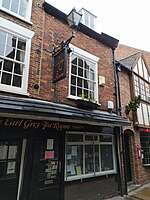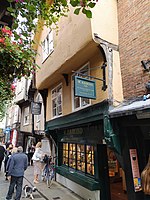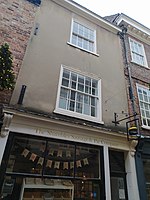The Shambles
Butcher shopsThe ShamblesTimber framed buildings in YorkshireTourist attractions in YorkUse British English from October 2017

The Shambles is a historic street in York, England, featuring preserved medieval buildings, some dating back as far as the 14th century. The street is narrow, with many timber-framed buildings with jettied floors that overhang the street by several feet. It was once known as The Great Flesh Shambles, probably from the Anglo-Saxon Fleshammels (literally flesh-shelves), the word for the shelves that butchers used to display their meat. In 1885, thirty-one butchers' shops were located along the street, but now none remain.
Excerpt from the Wikipedia article The Shambles (License: CC BY-SA 3.0, Authors, Images).The Shambles
Shambles, York Bishophill
Geographical coordinates (GPS) Address External links Nearby Places Show on map
Geographical coordinates (GPS)
| Latitude | Longitude |
|---|---|
| N 53.959402777778 ° | E -1.0801111111111 ° |
Address
Shambles (The Shambles)
Shambles
YO1 7LX York, Bishophill
England, United Kingdom
Open on Google Maps










